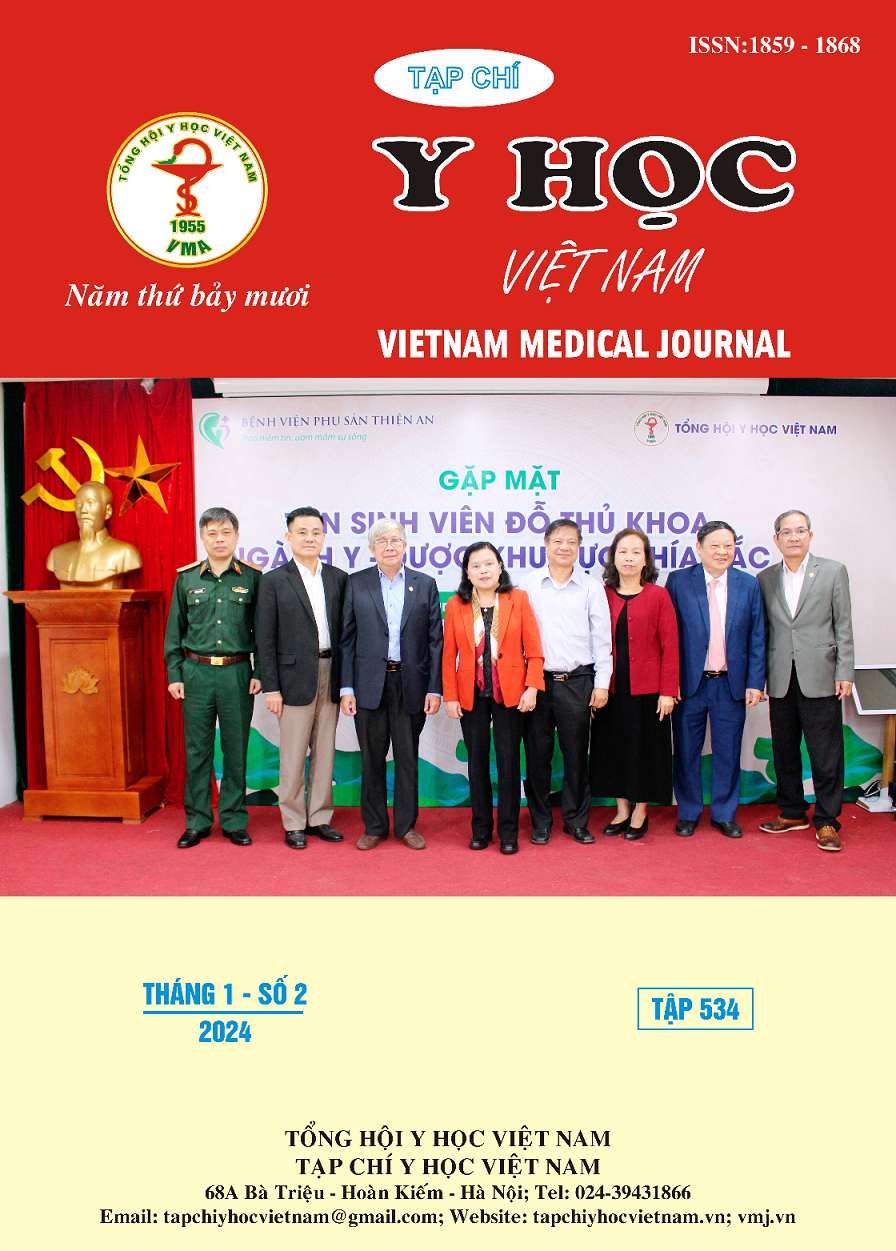DETERMINING CLARITHROMYCIN RESISTANCE GENE MUTATIONS IN HELICOBACTER PYLORI USING 23S rRNA GENE SEQUENCE TECHNIQUE
Main Article Content
Abstract
Background: Helicobacter pylori (H. pylori) is the main agent in most stomach and duodenal diseases and the main cause of stomach cancer. Clarithromycin (CLA) is an important antibiotic in standard triple therapy of treating H. pylori. Using molecular biological diagnostic methods such as PCR and gene sequencing, we can not only detect H. pylori in stomach tissue samples but also identify mutations resistant to CLA, such as A2142C, A2142G, and A2143G. A2115G, G2141A, A2144T and T2289C. Objectives: Determine the rate and distribution of clarithromycin resistance mutations in H. pylori based on point mutations using 23S rRNA gene sequencing in patients with gastric and duodenal ulcers. Methods: Descriptive cross-sectional study from November 2022 to May 2023, performing gene sequencing techniques to determine CLA resistance genotypes on H. pylori and collecting social characteristics, clinical symptoms, and epidemiological factors. Results: The rate of carrying the CLA antibiotic resistance mutation was 81.2%, of which the A2143G mutation accounted for 77.7%, the C2182T mutation accounted for 8.2%, and no cases with the A2142G mutation were detected. Factors: gender, relatives infected with H. pylori, not regularly washing hands, and raising animals in the house are all related to the rate of carrying CLA antibiotic resistance mutations, with statistical significance p < 0.05. Conclusions: The rate of patients with H. pylori infection carrying CLA resistance mutations is very high, 81.2%. The emergence of new mutations reduces the effectiveness of H. pylori eradication in treatment regimens for patients with gastric ulcers – duodenum.
Article Details
References
2. Ha TMT, Le PTQ, Nguyen VN, Phan TN and Paglietti BJTJOIIDC. Helicobacter pylori 23S rRNA gene mutations associated with clarithromycin resistance in chronic gastritis in Vietnam. 2018; 12(07):526-532.
3. Kocazeybek B, Sakli MK, Yuksel P, et al. Comparison of new and classical point mutations associated with clarithromycin resistance in Helicobacter pylori strains isolated from dyspeptic patients and their effects on phenotypic clarithromycin resistance. 2019; 68(4):566-573.
4. Phạm Ngọc Doanh. Nghiên cứu tỷ lệ kháng clarithromycin của Helicobacter pylori bằng phương pháp PCR-RFLP và kết quả điều trị của phác đồ nối tiếp cải tiến RA-RLT ở bệnh nhân viêm dạ dày mạn. Luận án Tiến sĩ Y học - Trường Đại học Y dược Huế. 2019.
5. Quach DT, Vilaichone R-K, Van Vu K, Yamaoka Y, Sugano K and Mahachai AaJaPJOCPA. Helicobacter pylori infection and related gastrointestinal diseases in southeast Asian countries: an expert opinion survey. 2018; 19(12):3565.
6. Essaidi I, Bounder G, Jouimyi RM, et al. Comparative study of Helicobacter pylori resistance to clarithromycin and metronidazole and its association with epidemiological factors in a moroccan population. 2022; 23(8):2755.
7. Nguyễn Thị Anh Xuân. Đặc điểm dịch tễ học nhiễm Helicobacter pylori ở trẻ em và các thành viên trong gia đình của hai dân tộc (Thái và Khmer) có nguồn gốc nhập cư vào Việt Nam. Luận án Tiến sĩ Y học - Trường Đại học Y Hà Nội. 2016.
8. Đào Thanh và cs. Khảo sát mối liên quan giữa genotype và tình trạng kháng Clarithromycin của Helicobacter pylori ở bệnh nhân viêm loét dạ dày tá tràng. 2021; 507:59-64.
9. Đặng Ngọc Quý Huệ. Nghiên cứu tỷ lệ kháng clarithromycin, levofloxacin của Helicobacter pylori bằng Epsilometer và hiệu quả của phác đồ EBMT ở bệnh nhân viêm dạ dày mạn. Luận án Tiến sĩ Y học - Trường Đại học Y dược Huế. 2018.


